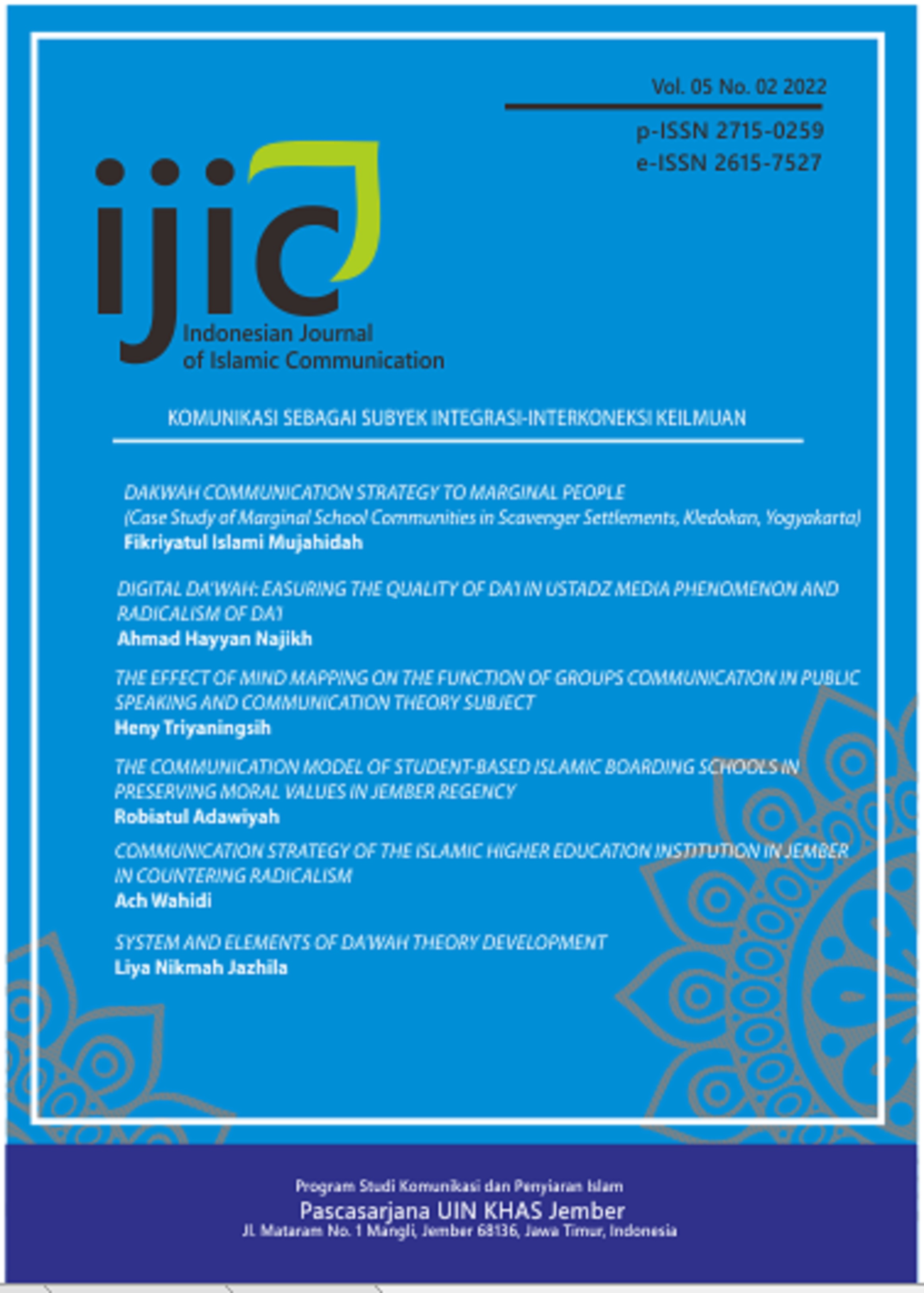SYSTEM AND ELEMENTS OF DA'WAH THEORY DEVELOPMENT
DOI:
https://doi.org/10.35719/ijic.v5i2.1313Keywords:
Da'wah System, Da’i, Mad’u, Communication Components, Input-Output System, Islamic Preaching, HidayahAbstract
The term da'wah has long been used and spoken widely among the public. It originates from the command of Allah, found in both the Qur’an and the hadiths of the Prophet Muhammad. Commonly paired with the word "Islam" to become Islamic da'wah, the term itself carries a broad and general meaning. It can be applied not only within the context of Islam or other religions but also in reference to good or bad matters. The da'wah system is composed of several subsystems, which are smaller components forming the overall structure. These subsystems are essentially the core elements of da'wah itself: the da’i (preacher), mad’u (the target or audience), maddah (da'wah content), wasilah (media), thariqah (method), and atsar (impact or effect of da'wah). These subsystems are interrelated, and the absence of even one of them can disrupt the achievement of da'wah objectives. Da'wah can be understood as an input-output system, an open system, and a feedback system. First, as an input-output system, da'wah transforms various components (inputs) into outcomes that reflect Islamic values (outputs). The quality of the da’i plays a crucial role in this transformation process, though the final success ultimately depends on the guidance (hidayah) from Allah SWT.
Downloads
References
Amruallah Ahmad, Dakwah Islam dan Perubahan Sosial, PLP2M, Yogyakarta : 1985
Mohammad Hasan, Metodologi Pengembangan Ilmu Dakwah, Pena salsabila, Surabaya : 2013
Hamzah Ya’qub, Publisitik Islam, CV Dipegogoro, Bandung Cet II : 1981
Marsekan Fatawi, Tafsir Dakwah, IAIN Sunan Ampel, Surabaya : 1978








